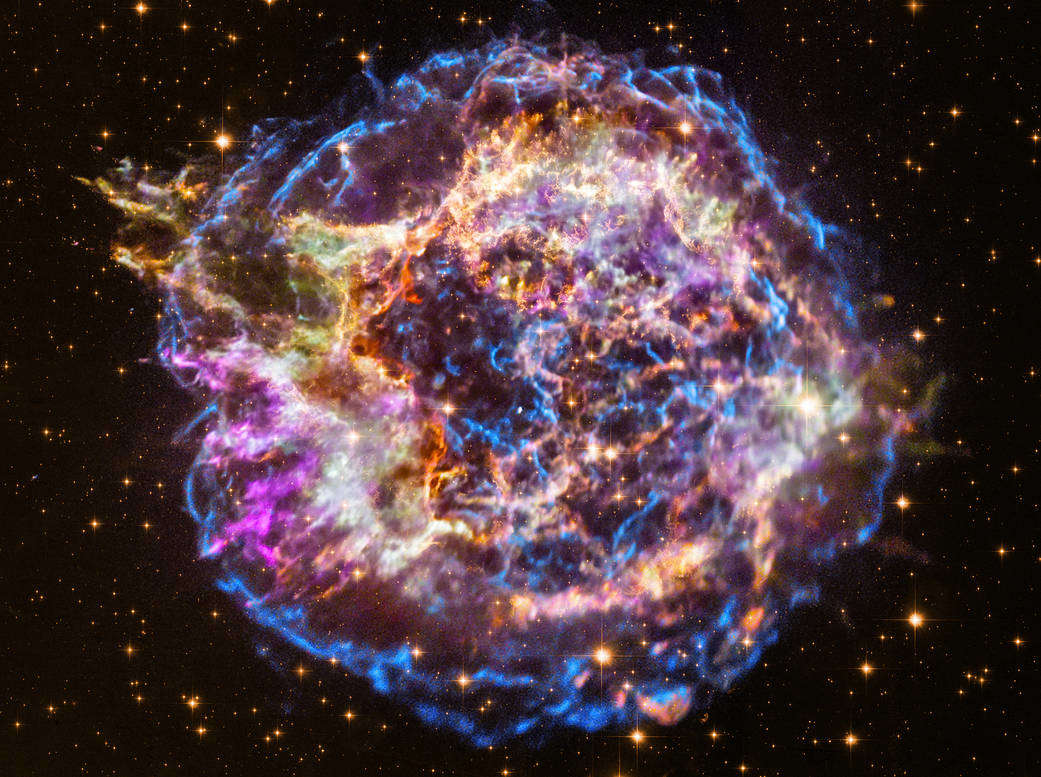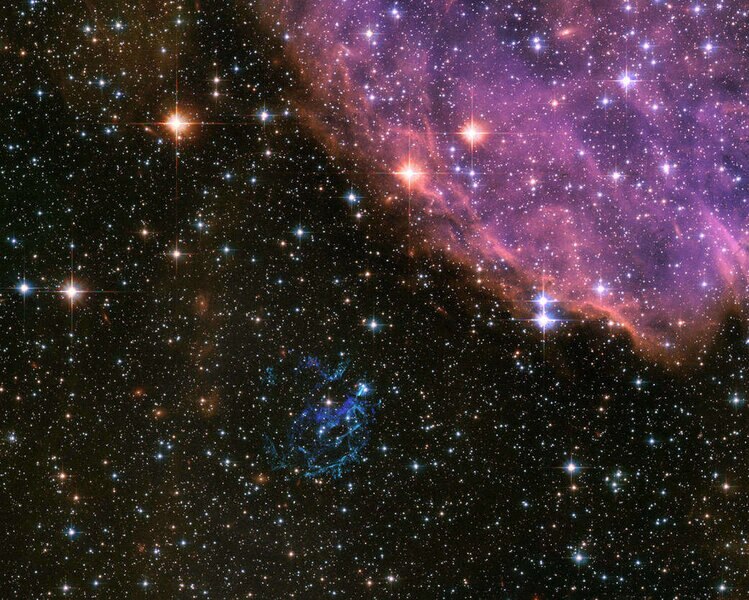Create a free profile to get unlimited access to exclusive videos, sweepstakes, and more!
We finally know where our galaxy’s cosmic rays come from… dismembered star corpses

When stars self-destruct at the end of their lives and blast out their innards, not everything dies with them. Some kind of zombification is always happening in space.
Supernovas are immensely energetic events. Cosmic rays are made of particles (mostly protons) with the highest known energy levels in the universe, zooming through the void at nearly the speed of light. For over a century, no one knew exactly what spawned them—until now. Astronomers Yasuo Fukui and Hidetoshi Sano led a study, recently published in The Astrophyiscal Journal, that has finally shed new light on the origins of cosmic rays.
Cosmic rays in themselves are not only gamma rays, but they are made mostly of protons. Gamma rays can be produced by protons or electrons. Fukui and Sano thought that if they found gamma rays were created by protons, possible evidence that cosmic rays emerged from supernova remnants, since so many protons escape an exploded star corpse.
“We had been looking for signatures of cosmic ray protons for years,” they told SYFY WIRE. “Our new research successfully derived the exact ratio between proton-based and electron-based cosmic rays, providing an ambiguous proof of their origin.”
Finding out which type of gamma ray was dominant in supernova remnant emissions would reveal whether cosmic rays arise from supernova remnants. It involved new tech that was capable of imaging observations in radio, X-ray and gamma ray wavelengths so they could be analyzed. Gamma rays not only have wavelengths too small for human eyes to process, but the shortest wavelengths that exist. X-rays also have short wavelengths. Radio waves are on the other side of the spectrum. The lower the wavelength, the more hi-res its image.
What Fukui and Sano already knew was that the density of interstellar gas they observed was proportional to gamma rays made mostly of protons. The density of that gas, at least when imaged in radio, is directly proportionate to how intense a proton-based gamma ray is. This is why they decided that, to show overall intensity of these gamma rays, they needed to quantify the proton component and electron component, which has never been done before. 70% of the gamma rays observed turned out to be proton-based, while only 30% were electron-based.
“The proton-based gamma rays require target protons and becomes enhanced in dense regions of gas,” Fukui and Sano said. “The underlying electron-based gamma rays become apparent in low-density regions where the proton-based gamma rays become weak.”
Where cosmic rays come from could demystify more about the origins of the solar system and even the universe. When a supernova goes off somewhere, most of what it releases goes back into forming stars and other objects somehow. Photons and gases can start to form new stars elsewhere, at least wherever interstellar winds carry them. Heavy metals produced through hardcore nuclear fusion (in which the nuclei of atoms are smashed together to form elements with more protons) could eventually end up incorporated into nascent moons or planets.
You can’t escape cosmic rays in space. They are thought to have been especially abundant in the early solar system, where the gas they existed in went through intense periods of heating, ionization, in which atoms or molecules gain or lose electrons and therefore become positively or negatively charged, and other processes that affected the Sun and other objects. Even our planet is influenced by them. The sun belches out cosmic radiation that can seriously mess with our satellites and power lines, and also be hazardous to ISS astronauts.
“Cosmic ray production is still poorly understood,” said Sano and Fukui “Soon, the new CTA gamma ray telescope will allow us to apply our new method and gain more insight into cosmic ray acceleration and propagation, as well as further our understanding of the violent phenomena in active regions around black holes.”















